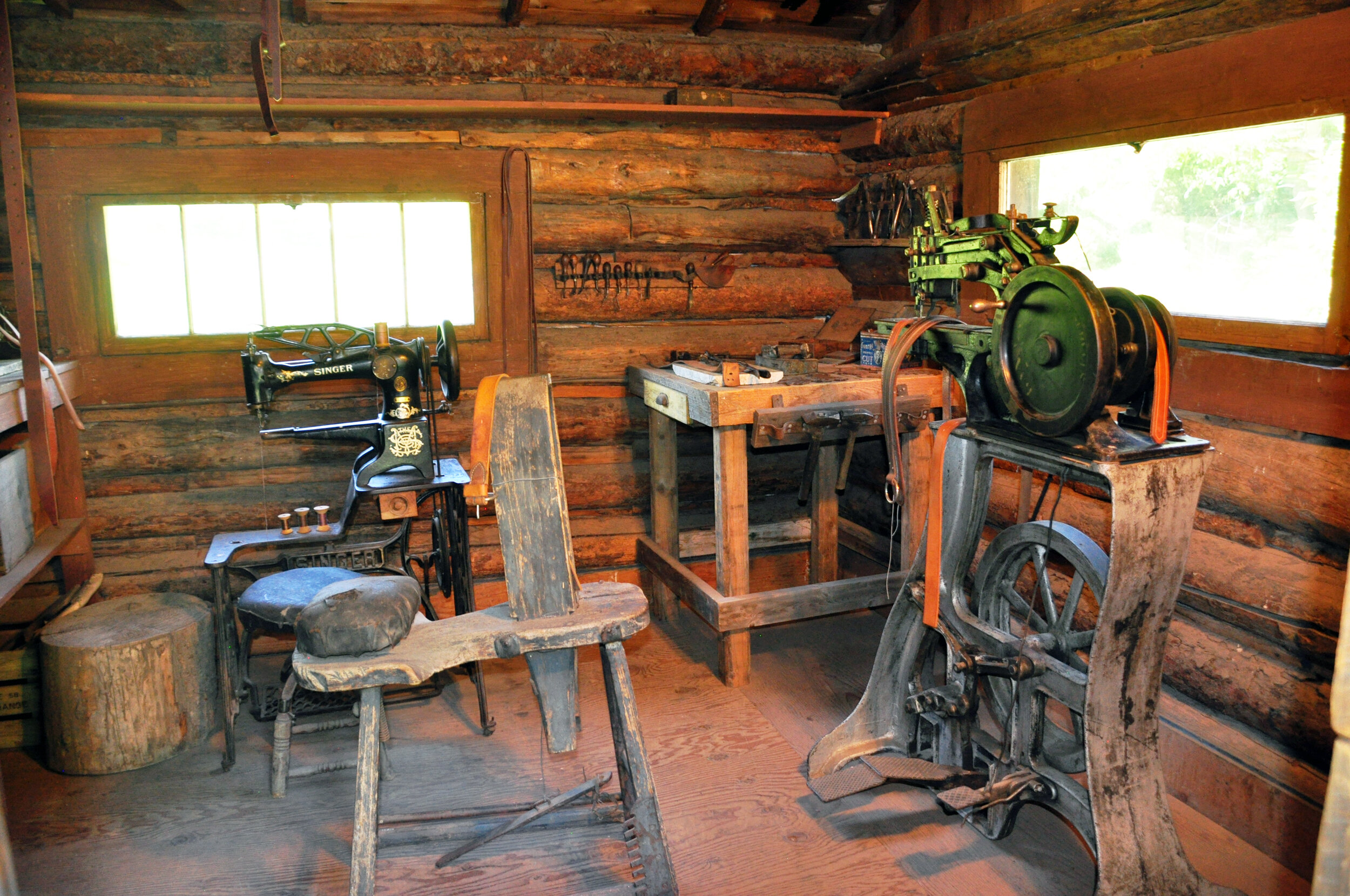A stroll through the museum’s Pioneer Village offers a taste of life in and around Walla Walla in the late 1800s and early 1900s. Encircling a common area, the 17 structures range from cabins and a school to blacksmith and dentist shops — all filled with interesting furnishings and artifacts. Visitors can see the places where real people lived, worked, played, and attended school. The Village includes 15 original buildings from within 30 miles of Walla Walla and two replica buildings.
The Ransom Clark Cabin: Clark, a member of the 1843 Fremont surveying expedition, returned to settle in the valley and began building a log house in 1859. Clark died before the house was finished, so his wife, Lettice, journeyed up the Columbia with their children to “prove up” the claim and finish the cabin. The large structure features two living areas separated by a breezeway that separates the kitchen and the living room.
The Kennedy Playhouse: A charming miniature house built in 1903 by Henry and Clara Baker for their daughter, Henrietta. The playhouse showcases a doll collection and other child-sized artifacts, from dishes to a toy ironing board.
Doctor’s Office: In the late 1800s, local doctor Dorsey Baker may have used an office like this one, equipped with medical furnishings, instruments, and supplies of the day. The examination table was probably used by Dr. C. E. Campbell, who began his practice in Walla Walla in 1907. The structure was originally a cabin that stood on the Fort’s grounds.
Babcock Railroad Depot: In the 1880s, trains picked up passengers at small stations like this one built by the Northern Pacific near Eureka, Washington. Its authenticity is enhanced by a collection of railroad artifacts from the region.
Prescott Jail: When troublemakers celebrated too freely at the several taverns in Prescott, a town in the middle of wheat fields and farms 20 miles from Walla Walla, they likely saw the inside of this jail, built in 1903. The jail’s heavy vault-like door was sawed out of the completed building after construction.
Union School: Original blackboards and lamp brackets are among the features of the Union School, one of the oldest and best-preserved one-room schoolhouses in the area. Built in 1867 just west of Dixie, Washington, it was moved further west to accommodate a farmer whose 10 children had to walk a long distance. Until it closed in 1930, the school housed grades one through eight with an average attendance of 15 to 18 pupils.
The Barbershop and Bathhouse: The building is a local structure that dates to about 1890. The furnishings were used in local barbershops. The 1870 barber chair is from Clifford Lee’s shop on Main Street, and the mirror’s origin was the Fort Walla Walla Barbershop. In the rear is a bathhouse, where men could pay 25 cents for a bath. Patrons shared the same bathwater, and the water would be cold and dirty by the end of the day.
Martin Harness Shop: Harness makers were vital to horse-powered agriculture through the 1930s. Charles K. Martin operated saddle and harness shops in several communities from about 1900 to 1960. The items displayed are all actual materials and tools that he used.
Jacky Play Cabin: Henry Jacky built this small cabin about 1925 on south Second Street, near Mountain View Cemetery. His daughter moved it to her home, where her children used the cabin as a clubhouse and Boy Scout meeting place.
Davis Cabin: The cabin was built in 1864 by John A. Davis and his wife, Caroline, who traveled by ox team from Iowa to Walla Walla. They homesteaded on Mill Creek about nine miles east of Walla Walla, making a home for themselves and 10 of their 14 children. This cabin has been converted to a general store, with wares of all kinds for sale.
Pioneer Cabin and Outhouse: In 1877, W. W. Davies built a cabin of hand-hewn larch logs eight miles east of Walla Walla, on Mill Creek. The original log house was torn down, and the logs were used to build this smaller cabin. Imagine pioneer life in a one-room cabin as you note the articles displayed here, including soap made from grease and lye water (produced by soaking wood ashes), a candle mold, a butter churn, and a cast iron waffle iron. The bed, made in Walla Walla in 1870, has a straw tick mattress laid on boards without springs.
Blacksmith Shop: Tools and equipment in this replica building are from the 1880s La Budde Shop of Eureka, Washington, and Ben Hunt Sr.’s wagon and repair shop in Walla Walla. The framed poster on the wall at the left, dated July 1875, promotes one of Walla Walla’s early blacksmiths, Fred Stine. The blacksmith shop had all the tools necessary for shoeing horses or repairing wagons and farm machinery. Those seen around the forge were mostly hand-made as the need arose. The large machine at the front of the shop was used to heat and shrink metal tires to fit them to the wheels. The wheels also had to be soaked in water frequently to expand the wood and keep the tires from coming off.









